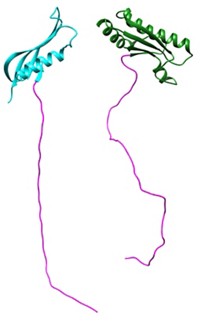Advertisement
Grab your lab coat. Let's get started
Welcome!
Welcome!
Create an account below to get 6 C&EN articles per month, receive newsletters and more - all free.
It seems this is your first time logging in online. Please enter the following information to continue.
As an ACS member you automatically get access to this site. All we need is few more details to create your reading experience.
Not you? Sign in with a different account.
Not you? Sign in with a different account.
ERROR 1
ERROR 1
ERROR 2
ERROR 2
ERROR 2
ERROR 2
ERROR 2
Password and Confirm password must match.
If you have an ACS member number, please enter it here so we can link this account to your membership. (optional)
ERROR 2
ACS values your privacy. By submitting your information, you are gaining access to C&EN and subscribing to our weekly newsletter. We use the information you provide to make your reading experience better, and we will never sell your data to third party members.
Biological Chemistry
Arginine-containing vesicles deliver
December 11, 2006
| A version of this story appeared in
Volume 84, Issue 50
Arginine-rich peptides have previously been shown to transport cargo into cells. Now, Timothy J. Deming and his coworkers in the department of bioengineering at UCLA have shown that they can get similar transport properties when arginine is part of a polymeric vesicle (Nat. Mater., DOI: 10.1038/nmat1794). But rather than attach a polyarginine peptide to an existing vesicle, they formed the vesicles from a polyarginine-polyleucine block copolymer. In effect, they replaced polylysine in an earlier version of the vesicles they had made with polyarginine without disrupting the self-assembly process. Although polyarginine peptides longer than 20 amino acids have shown cellular toxicity in the past, the new vesicles, which contain segments of 60 arginine units and 20 leucine units, are not toxic. The vesicles can transport dye-labeled dextran into epithelial and endothelial cells in cell culture, which the researchers monitored by fluorescence. Vesicles made with lysine instead of arginine are not taken up by cells, nor is nonencapsulated dye-labeled dextran.





Join the conversation
Contact the reporter
Submit a Letter to the Editor for publication
Engage with us on Twitter